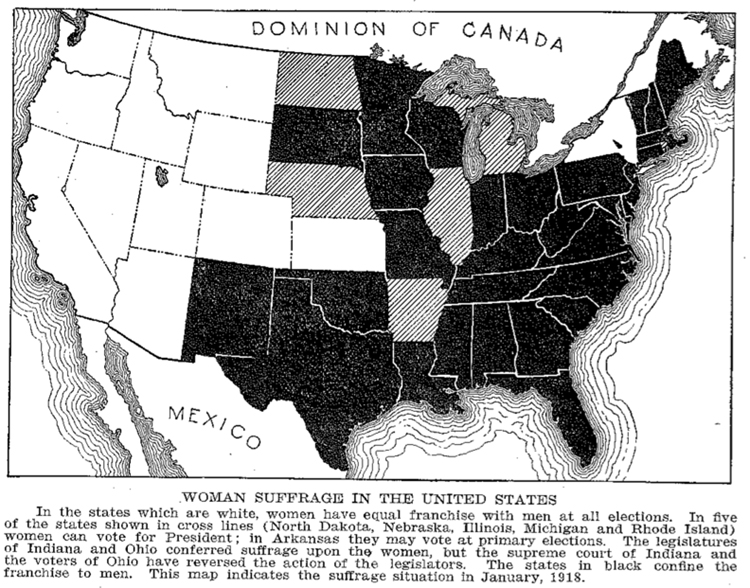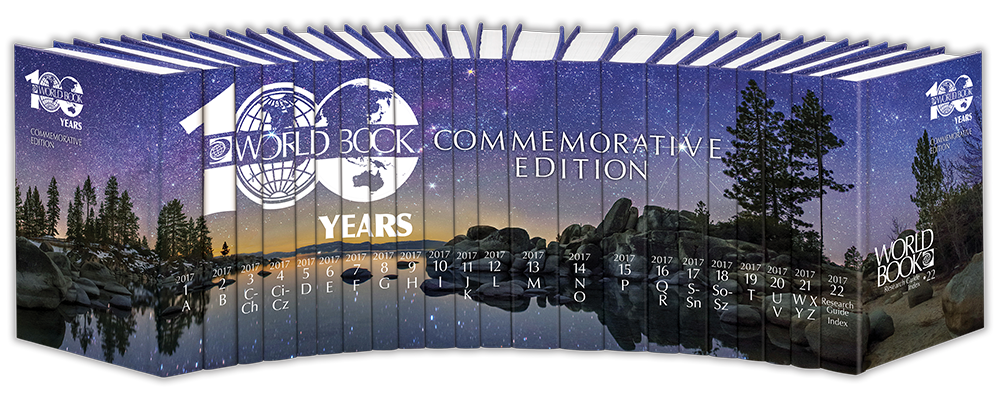March is Women’s History Month in the United States, the United Kingdom, and Australia, where it coincides with International Women’s Day (March 8). As we celebrate this relatively recent annual observance of women's achievements and contributions to society, it is interesting to look back 100 years, when The World Book Encyclopedia was first published, to see how women in these countries and others fared back in 1917.

As a map in the 1917 World Book article “Woman suffrage” illustrates, in January 1918, women had full suffrage (the right to vote) in 12 U.S. states: Wyoming (1869); Colorado (1893); Utah and Idaho (1896); Washington (1910); California (1911); Arizona, Kansas, and Oregon (1912); Nevada and Montana (1914); and New York (1917). Women could vote in presidential elections (but no others) in an additional five states: Illinois, Michigan, Nebraska, North Dakota, and Rhode Island.
In Canada, women had provincial suffrage rights in Alberta, British Columbia, Nova Scotia, Ontario, and Saskatchewan. In the other provinces there was municipal or school suffrage. In addition, in 1917, the Dominion Parliament enacted a war-time election bill giving Parliamentary suffrage to the mothers, sisters, wives, widows, and daughters of men in active military service.
As the World Book article states, women in Australia, Denmark, Finland, Iceland, New Zealand, and Norway had full suffrage in 1917.
The article also notes, “It may be true that there are ignorant women voters, but there are likewise ignorant men, and as a rule the really telling arguments against woman suffrage apply equally against democracy itself. “ It also suggests essays to consult “for favorable expressions” as well as “for “ opposing views” on the subject!
The first World Book set also contained articles on the “revered pioneer of the now-popular cause of woman suffrage” Susan B. Anthony and fellow American suffrage leader Elizabeth Cady Stanton; “Miss Jeannette Rankin,” who in 1916 became the first woman ever elected to the law-making body of an independent nation when she was chosen to be representative-at-large for the state of Montana; and “English militant suffragist” Emmeline Pankurst, “the world’s most conspicuous advocate of woman suffrage.”
Today, women have the right to vote in every country where men have the right, except Vatican City. Since earning the right to vote, women have, of course, made great strides in many areas. A number of women have held the highest political office in their country, including Indira Gandhi of India, Golda Meir of Israel, Margaret Thatcher of the United Kingdom, Angela Merkel of Germany, Jenny Shipley and Helen Clark of New Zealand, and Julia Gillard of Australia. And, as the 2017 edition of World Book notes in its “Women’s movement” article, in 2016, Hillary Clinton became the first woman to be a major party’s nominee for president of the United States.
In addition to the “Woman suffrage” and “Women’s movement” articles, you’ll also find many fascinating articles about women leaders in the latest print set of The World Book Encyclopedia.
THE WORLD BOOK DIFFERENCE
Throughout the nearly 100 years
of publication of The World Book
Encyclopedia many things have
changed, but World Book’s dedication
to providing timely, reliable, and
readable educational and reference
materials has not wavered.
Today, World Book remains dedicated
to fostering a deep desire to learn
in students of all ages. In print and
online, World Book content is especially
crafted with young readers in mind
to help ensure that their commitment
to reading is rewarded with easily
understandable text that engages
and educates.
THE WORLD BOOK ENCYCLOPEDIA 2017
Celebrating 100 years of publication!
